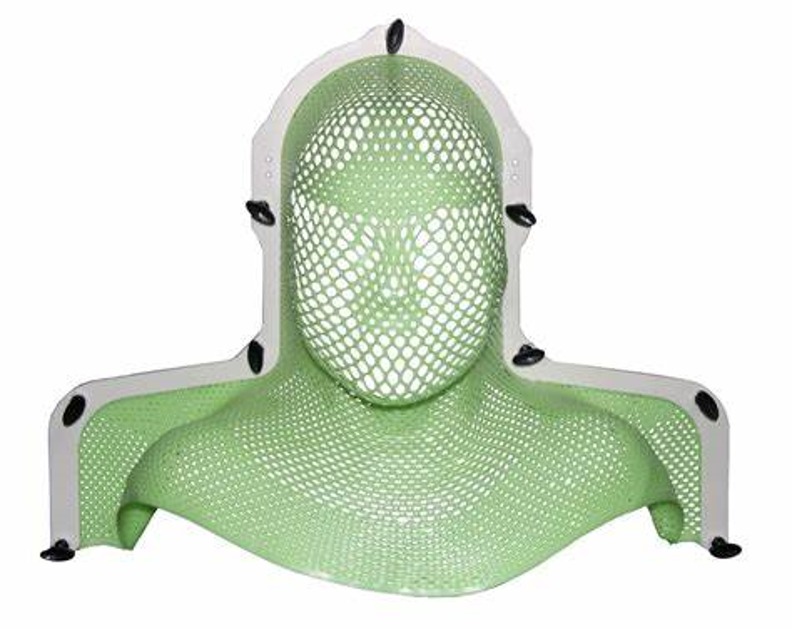Palliative Treatment

Radiation therapy uses high energy xrays to treat cancer. Palliative treatment means treatment to shrink a cancer, slow down its growth, or control symptoms caused by the cancer.
It does not aim to cure the cancer and so lower doses of radiation can be safely used without much in the way of side effects for the patient. The aim of delivering palliative radiation therapy is to control symptoms of a cancer or prevent symptoms from occurring and so giving the patient a better quality of life.
Palliative radiation is not suitable for all types of cancers – it depends on the particular type and the area that the cancer has spread to. Sometimes other treatments such as surgery, chemotherapy, or hormone therapy may be more helpful.
Palliative radiation therapy is used for many different reasons including:
• Relieve of bone pain
• Treating spinal cord and nerve compression
• To treat the symptoms of cancer within the brain
• Shrinking a tumour to relieve pressure or a blockage
• To stop bleeding
Long courses of treatment are generally not required and in most cases patients are treated with as few as 1 or 2 treatments or up to 10 treatments. In situations where patients are frail or live at a distance from the radiation treatment centre or if it is urgent such as large amount of bleeding, or spinal cord compression, the doctors may offer same day treatments.
Before treatment is given, patients will attend the department for a radiotherapy planning session which involve a CT scan and permanent ink markers (‘tattoos’).
This allows the Radiation Oncologist and the team to design a treatment that is tailored to the patients’ body shape, size and the position of the cancer. During the planning session, X-rays or CT scans are performed of the area to be treated. Small tattoo marks are often placed on the skin overlying the area to be treated and these tattoo marks help the staff ensure treatment accuracy.
When the palliative treatment involves the head or neck region, a special plastic mask or ‘shell’ is made at the time of planning to help keep the head very still and in the same position each day for treatment. If you have claustrophobia, please let your radiation team know so that this can be addressed prior to radiation planning.

An example of a mask which is used to keep the head very still and in the same position each day for radiation therapy treatment to cancers in the head or neck region.
-
Side Effects of Palliative Radiation Therapy?
In general, the side effects after palliative radiation are minimal because the doses used are lower than those used when curative radiation is given. Before radiation is planned and delivered the radiation oncologist sits with the patient and explains all the potential side effects of the treatment.
These vary depending on exactly what area of the body is being treated and the number of treatments and dose being given.
General side effects include tiredness and minor skin redness in the area being treated. Nausea/sickness can occur with some treatments such as brain radiation and areas around the stomach/abdomen. If your radiation oncologist thinks that nausea/sickness may occur you will be given an anti sickness tablet (antiemetic) half an hour before each treatment.
These tablets are very effective at preventing and controlling sickness.
It is important that you discuss any side effects that you are experiencing with your doctor so that these can be managed effectively.
-
Palliative Radiation Therapy to Relieve Bone Pain
Cancer can spread to the bones . This can cause pain and may cause weakness in the affected bone increasing the risk of a fracture.
Palliative radiation is a simple and effective treatment for cancer related bone pain. Often a single treatment can be used. Two thirds of patients will have moderate to complete pain relief.
A decrease in pain can occur as quickly as a few days after the treatment, or relief may take a few weeks to be achieved. The benefits of the treatment last many months for most patients but if pain returns, in most cases, the treatment can be repeated.
The radiation acts to shrink the cancer in the bone and as it does this it relieves the pressure and pain, allowing the healthy bone tissue to regrow in the area slowly restrengthening the bone.
-
Palliative Radiation Therapy to Relieve Spinal Cord Compression
When cancers spread into the bones of the spine one of the complications that can arise is spinal cord compression. The spinal cord is a large nerve that runs from the base of the brain down to the lower back. When cancers cause pressure on this nerve it can result in debilitating consequences such as leg weakness, severe pain and loss of bladder and bowel control. This is an oncology emergency, and requires urgent assessment and management.
Palliative radiation therapy is very effective at treating the symptoms of spinal cord compression and preventing progression of symptoms when the problem is picked up early. Spinal cord compression is treated as an emergency with radiation starting within 48 hours and where possible the same day.
If a patient is otherwise fit and has only a limited disease in the spine, spinal surgery is performed before the radiation, to physically relieve the pressure on the nerve. Your medical team will seek a neurosurgical opinion regarding suitability of surgery. Once spinal cord compression is diagnosed patients are started on a medicine called dexamethasone, which is a strong anti-inflammatory medicine that works with the radiation to reduce pressure on the nerve.
Patients with cancer in the bones and their doctors should be always on the look out for the early symptoms of spinal cord compression so that treatment is not delayed. If symptoms occur a special scan called an MRI scan should be ordered as soon as possible.
Symptoms to watch for include: back or neck pain that is getting worse or interrupting sleep; a band of pain around the body or down the arms or legs; numbness or sensation changes eg pins and needles in the arms or legs; weakness or difficulty using arms or legs; difficulty controlling bladder or bowel.
-
Palliative Radiation Therapy to Treat Symptoms of Cancer in the Brain
In some cases, cancer cells can spread via the blood stream into the brain, when this occurs a secondary cancer or brain metastasis can grow. These cancers that grow inside the brain can be solitary or many can grow at the same time.
They cause increased swelling and pressure inside the head as they grow and can cause symptoms such as headaches, nausea and drowsiness. Radiation therapy is a common treatment option offered for secondary brain tumours. The aim of the treatment is to shrink the tumours and relieve the symptoms of increased pressure inside the head.
Some patients may be offered surgery to remove the brain tumours before palliative radiation therapy is given.
Depending on a number of factors relating the patient and their cancer, radiation can be given to the whole brain or just to the affected area of the brain. In some circumstances when just the affected area is being treated, a special treatment technique is used called stereotactic radiation therapy which allows larger doses of radiation to be delivered safely to a small area.
In general, the short term side effects of giving radiation therapy to the brain can include headache, sickness/nausea, red itchy scalp, tiredness and hair loss. Most hair loss occurs toward the end or after treatment and is temporary. Hair usually starts to grow back 2-4 months after treatment.
-
Palliative Radiation Therapy to Relieve Pressure or a Blockage
Sometimes when a cancer grows it can put pressure on a tube. There are many tubes in the body that can be affected and these include the windpipe (trachea), the food pipe (oesophagus), the airways in the lungs, the bowel and large blood vessels. When a tube becomes partially or totally blocked radiation treatment can help to shrink the cancer and unblock the tube.
The most common tubes to be blocked by cancers are within the neck and chest. Symptoms from blockages in the chest include difficulty swallowing, shortness of breath and chest pain. If large blood vessels are blocked (superior vena cava compression otherwise called SVC obstruction) swelling in the arms and face can also occur.
Side effects of giving radiation to the chest often occur after the treatment has finished and last 5-10 days, these include cough, pain with swallowing, tiredness and redness of the skin in the treated area.
Most times the radiation is given externally, but in some cases the radiation can be given internally (brachytherapy) by placing a small radioactive metal source into the tube next to the tumour. The radioactive source is left in place for a few minutes before being taken out.
-
Palliative Radiation Therapy to stop Bleeding
Some cancers as they grow cause bleeding. Bleeding can cause patients distress and in some situations cause low blood counts (anaemia) that requires blood transfusion. Radiation therapy is a very effective treatment to stop cancer bleeding.
It is commonly used to treat bleeding from skin cancers, bladder and prostate cancer, bowel/rectal cancer, lung cancer and cancers arising in the cervix and uterus. Often the bleeding starts to settle down before the course of radiation therapy has finished.
Page last updated: 24/07/2020



